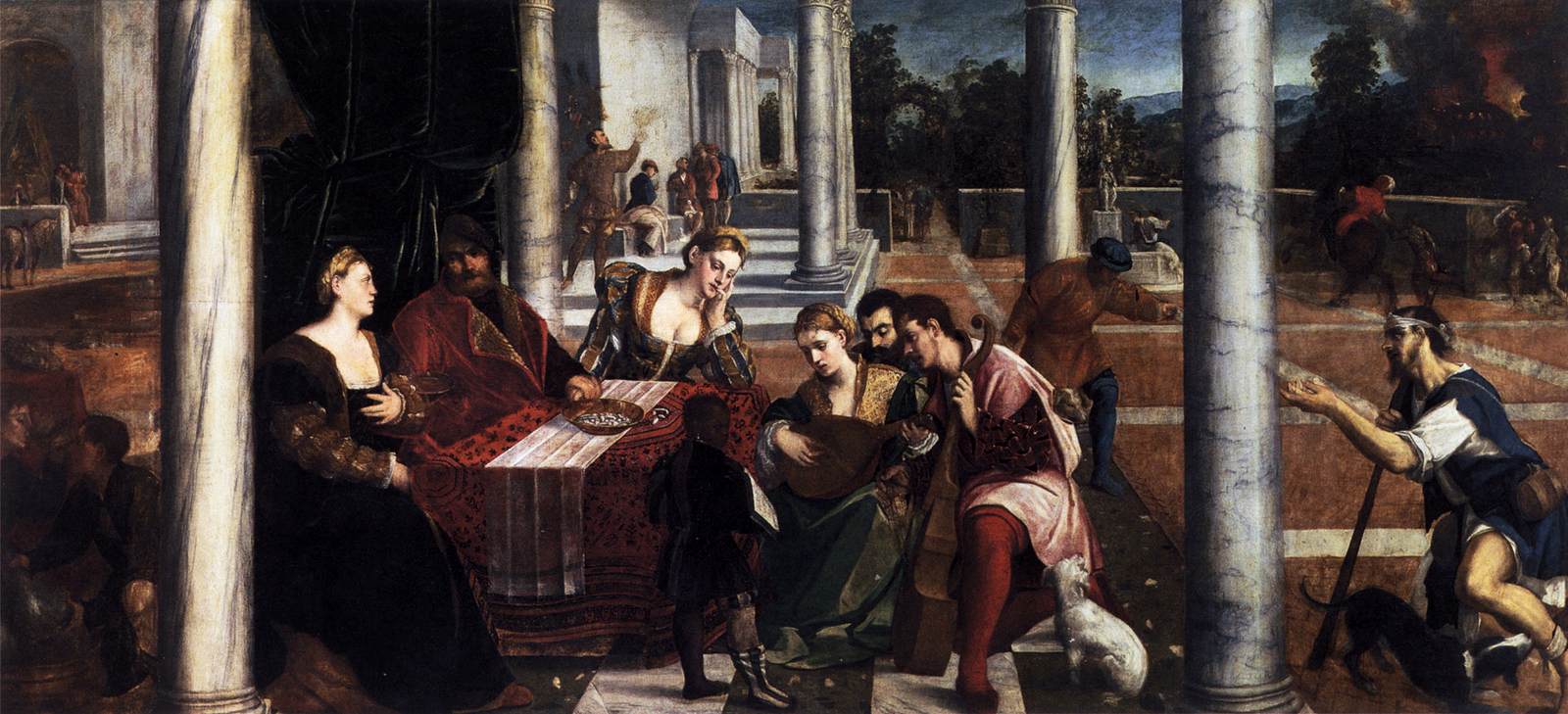
Historical
Oriental Rugs & Carpets
in Medieval European Paintings
Main Page
|
|

BONIFACIO VERONESE
(b. 1487, Verona, d. 1557, Venezia)
Dives and Lazarus
1540s
Oil on canvas, 204 x 436 cm
Gallerie dell'Accademia, Venice
Like Paris Bordone, Bonifacio Veronese fails to convey the spiritual complexity
of the world of the Mannerists, but used their formulae as a means of renewing
and developing his innate gifts as a narrator. Thus he exploited the sensuous
richness of the range of colours derived from Palma il Vecchio in his dynamic
formal articulations and complex perspective-spacial proposals which were
inspired in particular by prints of paintings by Raphael and the Roman artists.
The most inspired poetic achievement of the fascinating decorative liberty
attained by Bonifacio Veronese in the course of the fourth decade of the
sixteenth century is without doubt this representation of 'Dives and Lazarus'
which is mentioned in 1660 by Boschini as hanging in Palazzo Giustiniani at San
Stae.
The Gospel parable is here not used as a prompt for dramatic effects but rather
for the discursive presentation of a civilized meeting in the discreet
half-light of the portico of a country house of the time. The languorous abandon
to the music displayed by the group in the foreground is not in the least
disturbed by the presence of the beggar, Lazarus, nor yet by the sudden bursting
in of the armed men taking refuge from the fire blazing in the distance on the
right, while the left and centre of the picture depict the serene passing of
time in country house life: the servants intent on their bread-making, the
lovers at the entrance to the tree garden, the hunters resting against the wall
of the building. In the light, mellowed by the melancholy, yearning reflections
of sunset, the colours acquire a refined neo-Byzantine richness and seem to be
reminiscent of the 'courtly' fables of Vittore Carpaccio.